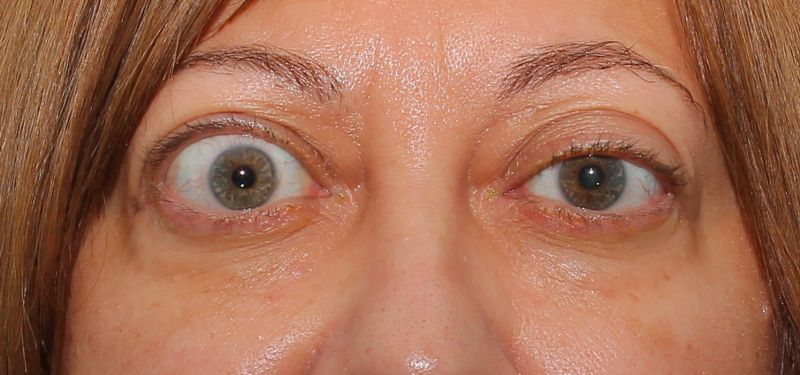Eye diseases
Exophthalmos

What is exophthalmos?
Exophthalmos is the term we use in ophthalmology to define eyes that protrude from their normal position, popularly known as “bulging eyes”. Exophthalmia is also called proptosis (hinting at the protrusion of the eyeball) and, although at first it may seem like a trivial pathology, the truth is that it can hide potentially serious diseases, such as hyperthyroidism or a tumour near the eye.
Contrary to exophthalmos, there is also enophthalmos, which looks like “sunken eyes”.
Symptoms
Causes and risk factors
Treatment
Exophthalmos does not give eye symptoms as such (although it can cause double vision). Since the shape and size of the eyes are not exactly the same for everyone, there are some aspects to consider when assessing it. It is generally not difficult to distinguish, because the eyeballs of people with exophthalmos stand out in a very conspicuous way. However, to be sure and differentiate non-pathological bulging eyes from an exophthalmos, we must look at the amount of sclera (white part of the eyeball) that we see when the patient’s eyes are open. If this is seen in the upper part of the eye, that is, between the upper eyelid and the iris, we are dealing with a case of exophthalmos.



